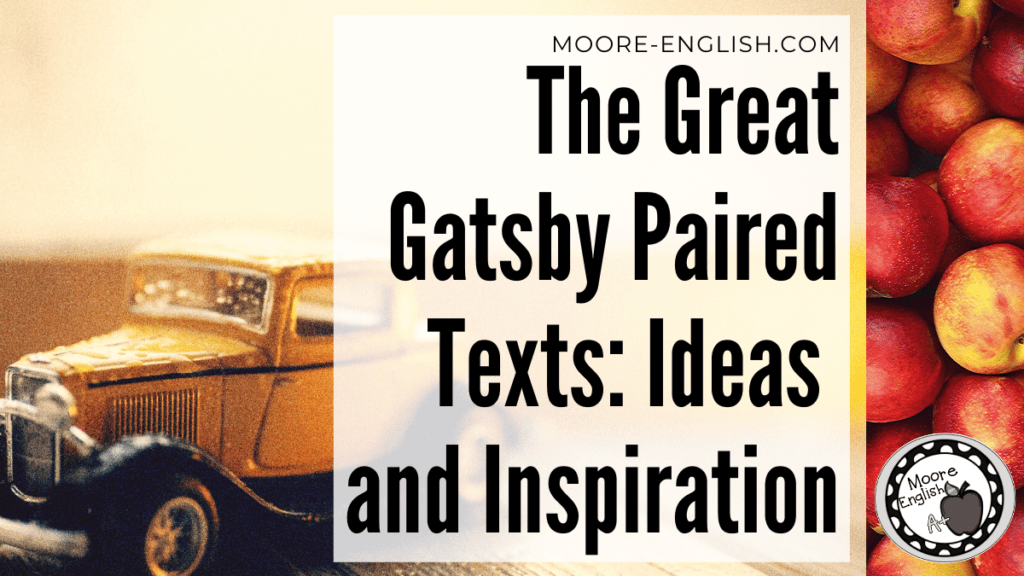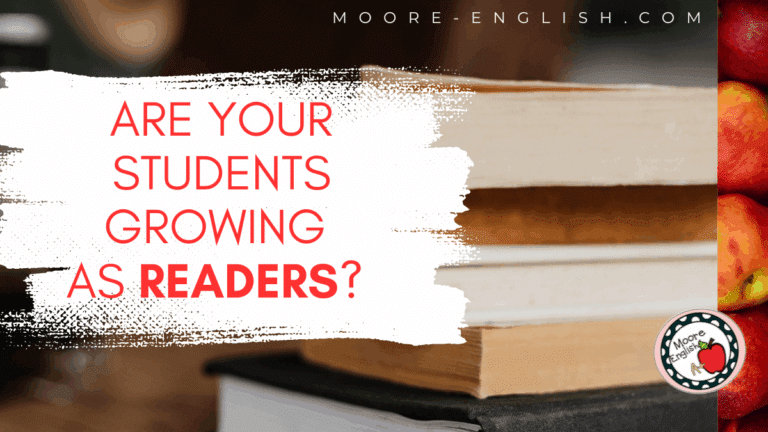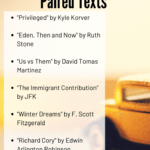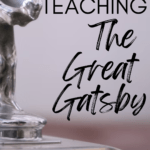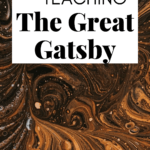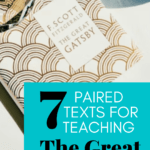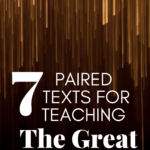Since I’m not teaching summer school, I’ve enjoyed getting some distance from the classroom. Getting perspective from the classroom always leaves me re-energized and excited!
That means I’m feeling inspired now. So I’m thinking about the beginning of the year. In August, when school starts again, my juniors will begin the year studying The Great Gatsby and American modernism. This is such a fun way to begin the year.
One of my favorite aspects of teaching this novel is the way it lends itself to synthesis. Most of the texts and resources discussed below are also included in my Great Gatsby Synthesis Bundle. It’s designed to take some of the guesswork out of deciding how and when to use a specific text. Here are some of my favorite texts for inviting synthesis with F. Scott Fitzgerald’s The Great Gatsby.
This post this post may contain affiliate links. Please read the Terms of Use.
American Dream
The American Dream is a crucial part of teaching The Great Gatsby. In fact, it’s such a crucial part of this novel that I’ve already written an entire post about how to introduce the American Dream. However, there are also some specific texts that I like to include to encourage discussion of the American Dream.
- “Richard Cory” by Edwin Arlington Robinson. This poem provides the tragic portrait of its title character. Asking students to compare and contrast Cory and Gatsby proves to be an effective way to discuss and critique the American Dream. Like The Great Gatsby, this text leaves readers wondering about the relationship between money, materialism, and happiness. Check out my close reading guide, analysis questions, and extension activity for this poem here.
- “The Immigrant Contribution” by JFK. In this excerpt from John F. Kennedy’s book A Nation of Immigrants, students begin to see different versions of the American Dream. Helping students approach the American Dream from different perspective provides some insight into Myrtle and George Wilson’s characters. It also helps students consider the role of privilege in accessing the American Dream. Check out the pre-reading guide, multiple-choice questions, and short answer prompts I use for this text here.
Modernism
Another important aspect of discussing The Great Gatsby is considering its historical context. For this reason, I usually introduce my students to the concept of American modernism by using this acronym. To help students explore the meaning of modernism, we read and annotate these texts:
- “The Death of the Ball Turret Gunner” by Randall Jarrell. Although Nick and Gatsby both served in World War I, little of its legacy explicitly appears in The Great Gatsby. What does that absence reveal about the characters? Their privilege? Their isolation? Reading this poem provides students with a doorway into that conversation. Jarrell’s writing does not shy away from the brutality of war. This means makes the poem a good candidate for helping students approach modernism. Check out my pre-reading guide, guided reading tool, and multiple-choice questions for this poem here.
- “Winter Dreams” by F. Scott Fitzgerald. It may seem redundant to teach two Fitzgerald texts in one unit. But Gatsby’s weaknesses and faults grow more obvious in comparison. The same is also true for Fitzgerald’s faults as a writer. The opportunities for synthesis abound in reading The Great Gatsby against “Winter Dreams.” Its brevity also makes it a great tool for exploring the characteristics of Modernism. Check out my reading questions, task card, vocabulary activities, and synthesis prompts for this text here.

Critical Perspectives
In addition to addressing the American Dream and Modernism, reading The Great Gatsby also requires critical perspectives. The novel is not perfect–far from it. So it’s important that students also explore the novel’s faults. Here are some texts to use to introduce and interrogate its flaws.
- “Us vs. Them” by David Thomas Martinez is an incredibly powerful poem. It provides commentary on the American Dream and challenges readers to think about the criteria for accessing the American Dream. This is such a rich poem that you can also use it to teach allusion, historical context, and characterization. Because it is such a powerful piece, all my resources for this poem are free.
- “Privilege” by Kyle Korver made it into my teacher recommended reading but also into my classroom. The text challenges readers’ thinking about race, privilege, gender, and the American Dream. It’s such a wide-ranging and significant text that it opens itself up to lots of instructional opportunities. These include SOAPSTones, rhetorical analysis, and synthesis. My pre-reading guide, short answers, multiple choice, and vocabulary activities for this text can be found here.
- “Eden, Then and Now” by Ruth Stone is the a great companion to The Great Gatsby. One thing that amazes me about The Great Gatsby is Fitzgerald’s almost prescient commentary on class leading up to the Great Depression. This text provides a great opportunity to discuss class, wealth, and privilege. It also allows you to review allusion with students. My allusion connection tool, reading questions, and graphic organizer for this poem are here.
- “The Yellow Wallpaper” by Charlotte Perkins Gilman is such a powerful short story. It’s ripe for literary criticism. But its main character also provides commentary on women in The Great Gatsby. Fitzgerald’s characterization of women in both The Great Gatsby and “Winter Dreams” invites critical analysis. And this text opens that doorway for students. Check out my tools for teaching this short story here.
- Disrupt Texts also has a great list of suggestions for engaging alternative viewpoints on and in The Great Gatsby.
Last Thoughts
With its faults, the novel also becomes a good opportunity to explore literary criticism. Prestwick House actually has a free poster download that does a great job applying literary theory to the text. This is the poster I use to introduce students to some critical terms. I also enjoy using task cards to help students work through different critical stances.
Similarly, teaching this unit several times has helped me develop some key essential questions:
- Firstly, how does capitalism affect morality?
- Secondly, how does the past affect the present?
- Thirdly, what are the consequences of extreme privilege?
- Similarly, what is the relationship between wealth and perspective?
- Additionally, what is the cost of maintaining class, gender, and social norms?
- Finally, is it possible to achieve the American Dream? Is that a worthy goal?
Overall, the more times I have read The Great Gatsby with students, the more opportunities I see for synthesis. This includes analysis of the American Dream, modernism, and critical perspectives. Synthesis remains one of the most difficult skills to teach and one of the most important ones for students to master. What other texts do you teach alongside The Great Gatsby? Let us know your suggestions in the comments!



